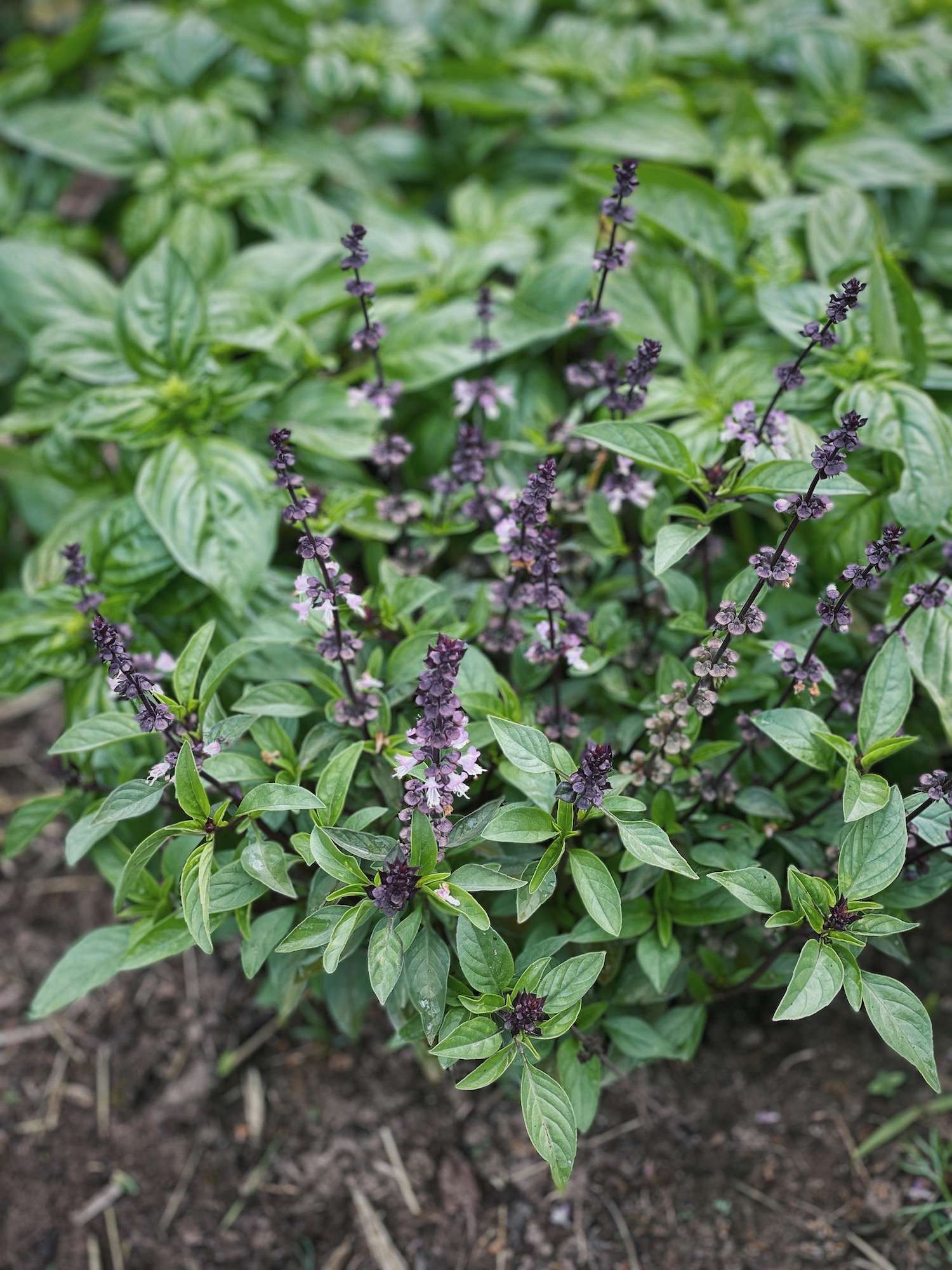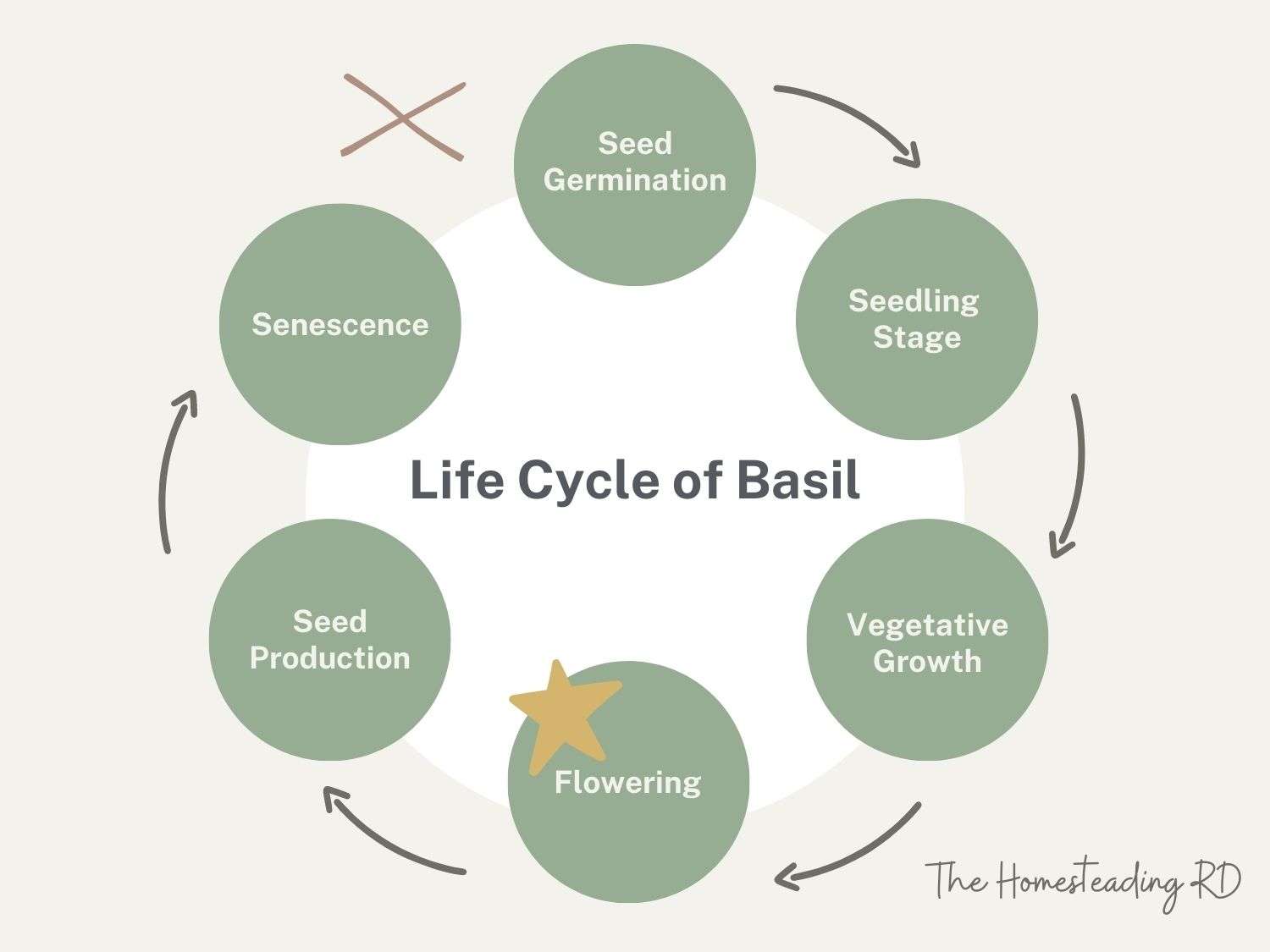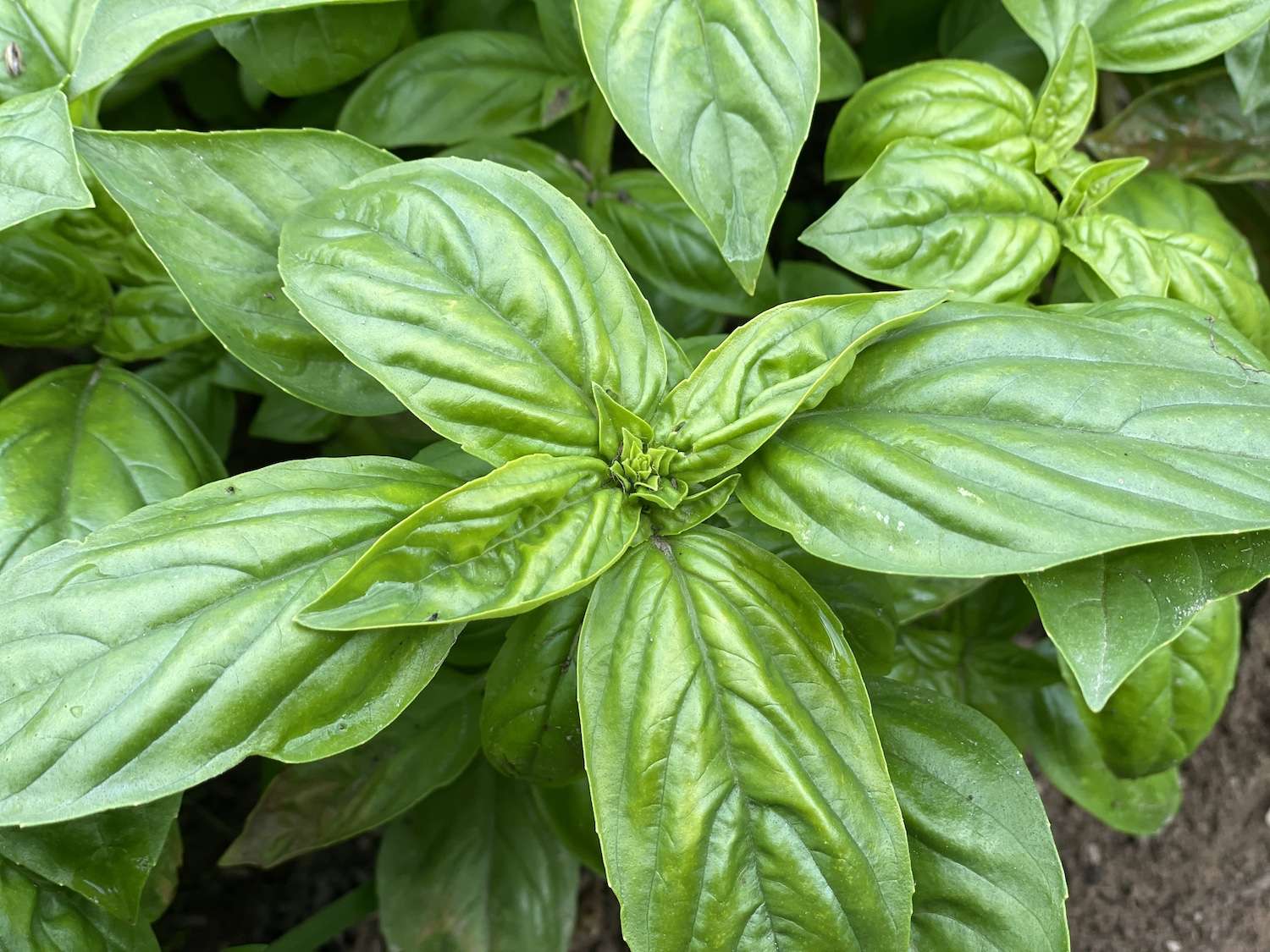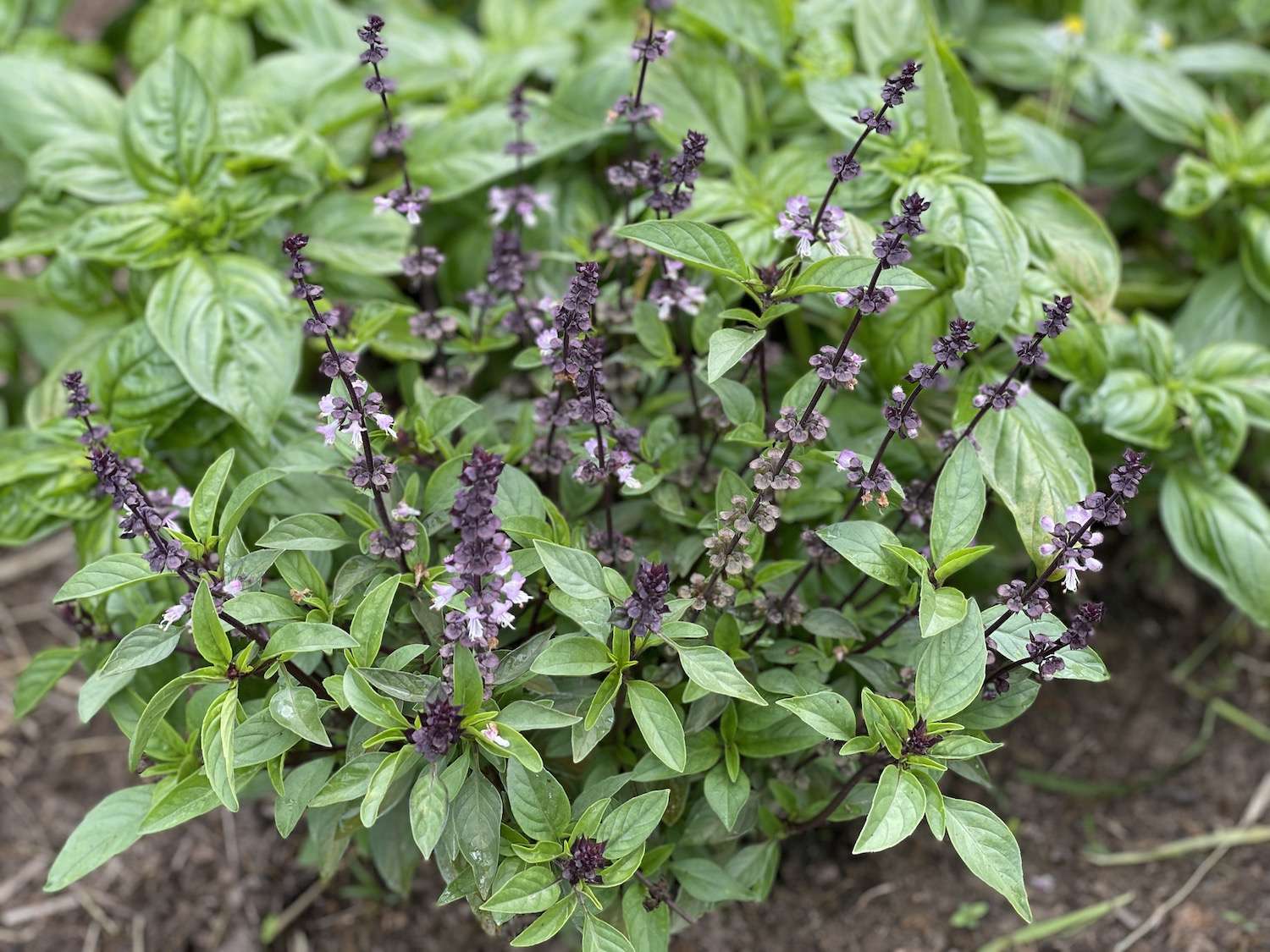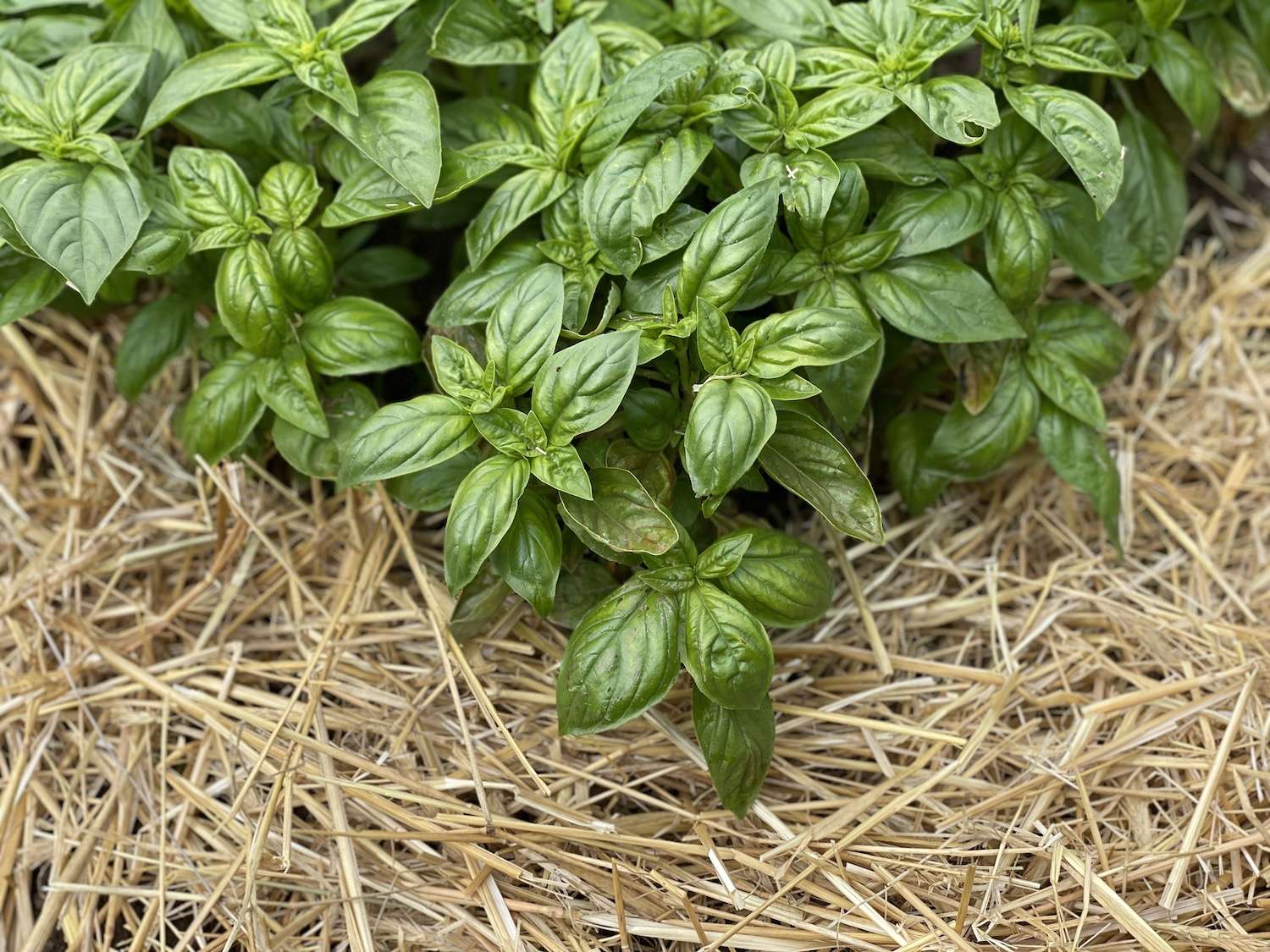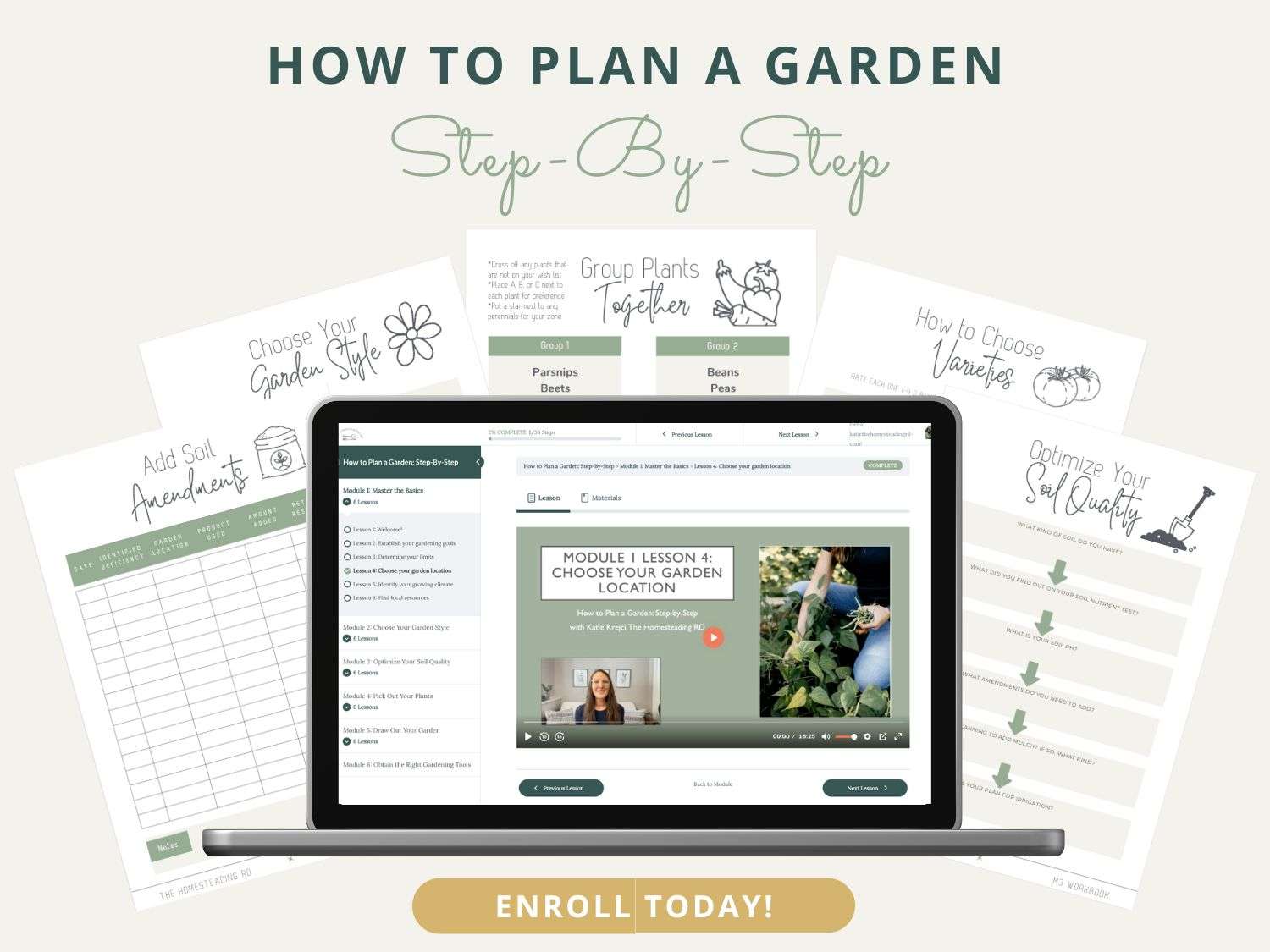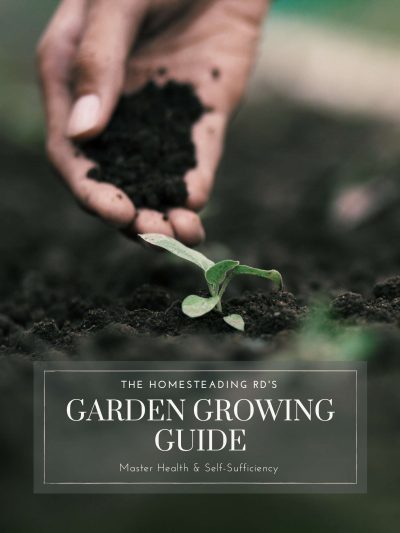Have you noticed your basil plant flowering? Don’t panic! This is a normal part of the basil plant’s life cycle, but it can mean that your harvest is coming to a close if you don’t act fast.
In this article, we’ll review the reasons why your basil plant may be flowering and the best course of action to take depending on your plants and personal garden goals. Lastly, we’ll review some preventative strategies and identify which basil varieties are least likely to flower, meaning an extended harvest for you!
Whether you’re an experienced gardener or a beginner herb enthusiast, my article will equip you with the knowledge and strategies to maintain a flourishing basil plant throughout its life cycle. Let’s dive in!
*Disclosure: This post may contain affiliate links to products (including Amazon). I’ll earn a small commission if you make a purchase through my link, at no additional cost to you! Regardless, I only link to products that I personally use on our homestead or believe in.
Why Is Your Basil Plant Flowering?
Flowering is a very normal part of basil’s life cycle, but it can mean that your harvest window is coming to a close. To get a better understanding of why it flowers, let’s take a look at different stages of growth!
Life cycle of basil
The life cycle of a basil plant progresses through various stages, starting from seed germination and continuing through growth, flowering, seed production, and eventually, senescence.
- Seed Germination: The life cycle begins when a basil seed is planted in a suitable growing medium. Adequate moisture, warmth, and sunlight prompt the seed to germinate, with the emergence of a tiny seedling.
- Seedling Stage: At this stage, the basil plant develops its first set of true leaves, distinct from the initial seed leaves. The seedling requires controlled temperatures and consistent watering to thrive.
- Vegetative Growth: As the seedling matures, it enters the vegetative growth phase. The plant focuses on establishing a strong root system and producing lush foliage. Regular watering, adequate sunlight, and well-draining soil contribute to robust growth.
- Flowering (what we’re focusing on today!): Under certain conditions (keep reading to learn what those are!), the basil plant transitions to the flowering stage. This process signals a shift in the plant’s efforts to from production to reproduction. Leaf growth stops and they can become bitter and fibrous.
- Seed Production: Once the basil flowers are pollinated, they give way to seed pods. These pods contain tiny basil seeds. As the pods dry and turn brown, they can be harvested for future planting or culinary use.
- Senescence: Eventually, as the growing season ends, the basil plant begins to decline. Leaves may be yellow, and overall growth slows down. This marks the senescence stage, where the plant prepares for dormancy or completes its life cycle.
*It’s important to note that basil plants are generally grown as annuals and complete their life cycle within one growing season. However, in warmer climates, they may behave as perennials, with the potential to continue growing and flowering for multiple years.
Triggers for basil flowering
Basil takes signals from the environment to decide when it’s best to slow foliar growth and change gears to seed production. The plant needs adequate time to produce seed before the season comes to a close, so typically mid-summer is when it starts to make the shift.
- High temperatures
- Long daylight hours
- Water stress
What to Do When Your Basil Is Flowering
Your plan of action will depend on how far along your basil plants are in the flowering process. It also depends on your goals for your garden.
- Do you want a big harvest?
- Do you want to save seeds for next year?
- What about supporting pollinators?
- Do you have a small garden and need to maximize your space?
Let’s break it down so that you know the best option for you!
Early set of flower buds
If you caught it early enough, you can definitely save your basil plant to prolong your harvest. When the flower buds are just starting to set (as in the photo below), simply pinch them off. This will delay flowering and promote further branching of the basil plant (which means even more leaves for you to harvest!).
The job isn’t over yet! Keep an eye on your plants, because eventually, they will try to flower again. Go through the process of pinching off the new set of small flower buds as soon as they form. Easy peasy!
Full sets of flowers
If you’re late to the game and your basil plants have already put on a full set of flowers (like in the photo below of my Thai Basil), they are likely too far gone to use for culinary purposes. It’s okay, though! You still have some options going forward.
- Option #1: Leave them for pollinators – they love basil flowers!
- Option #2: Collect the flowers – place them in a bud vase, or sprinkle them in a salad (yes, they are edible!)
- Option #3: Collect seeds – let your basil plants continue through their life cycle, then harvest the seeds for next year!
- Option #4: Pull the plants – if you don’t have much garden space, you can replace them with something else (like new basil plants!)
Tips to Keep Your Basil Plant From Flowering
Prevention is king! There are a few things that you can do to prevent your basil plant from flowering in the first place – woo hoo!
#1: Control temperature & light
Since high temperatures and long daylight hours are a few factors that trigger flowering, putting in some controls can certainly help.
Here are a few things to consider:
-
- Provide mid-day shade by utilizing strategic companion planting with a taller plant
- Add some shade cloth to filter out some of the sunlight
- Add mulch around the base of the plants to keep the roots cool (my favorite is organic straw!)
- Water in the morning to reduce heat stress
The Homesteading RD's Product Picks | |
High-quality shade cloth is UV stabilized, rot and mildew resistant, and has an 8-year warranty with a 16-year life expectancy. Comes in many different sizes! | |
Knitted shade cloth made from 100% UV-stabilized, high-density polyethylene. Comes in a 6.5' x 6' size. No grommets. | |
Premium, organic wheat straw that is naturally sun-dried and cured. The straw ships in a box sized 18 x 12 x 4 inches. Great for the garden, or chicken coop! | |
#2: Harvest frequently
Harvesting basil leaves frequently will not only delay the set of flowers, but that means you’re getting to enjoy your delicious herbs, too! Now, this only occurs if you harvest basil by removing the growing tips of the plants. If you are just removing individual leaves, then flowering will not be delayed.
The added bonus of harvesting basil in this manner is that it will encourage the plant to grow in a bushy, full manner. This results in a stronger plant, and more leaves for you to harvest! If you only remove individual leaves, the plant will get tall, leggy, and flower a lot sooner.
#3: Choose the right variety of basil
Some types of basil are very prone to flowering (like Thai Basil), whereas others take their time and will give you a longer harvest window. Definitely give the more resistant varieties a try!
Varieties of basil that are slower to flower (or bolt):
#4: Utilize succession planting
Eventually, your basil will flower despite your best efforts. It’s just a natural part of their life cycle! Because of this, it can be helpful to engage in succession planting so that you can enjoy a continuous harvest of basil.
Succession planting involves starting new plants at regular intervals so that when the first set is no longer viable, the second set is just starting to produce. Now, you can just keep on harvesting.
I like to start a new grouping of basil every month. The worst-case scenario is that you end up with a lot of basil! That’s not so bad, right?
FAQ About Basil Plants Flowering
Can basil flowers be eaten?
Yes! Basil flowers are completely edible. You can use them as a garnish, tossed in salads, or even dried as a tea.
Is basil still good after it flowers?
Like with most things, it depends. If the basil has just started to develop baby flower buds, simply prune them off and continue to enjoy your basil! However, if the flowers are large and well-established, the basil leaves will lose their flavor and can be bitter.
What does it mean when basil plants flower?
When a basil plant flowers, it means that it is making a shift from leaf production to reproduction. First, it produces flowers, which then produce seed pods once pollinated.
Other Gardening Articles You’ll Love:
- When to Harvest Garlic Scapes (& How to Do It!)
- Lemon Balm vs Mint: Which One Should You Use and Grow?
- Do Deer Eat Tomatoes? 6 Tips to Keep Them Away!
Final Thoughts
Seeing your basil plant flowering may initially raise concern – I know because I’ve been there! However, understanding the reasons behind basil flowering and knowing how to address it can ease that anxiety and help your plants flourish.
By regularly pruning, controlling for lighting and temperature conditions, picking the right varieties, and harvesting basil leaves frequently, you can encourage robust foliage growth and delay the flowering process.
With a little knowledge and care, you can ensure a flourishing basil plant that continues to provide aromatic and flavorful leaves throughout the season. You’ve got this!
*Are you interested in starting a garden, but feeling overwhelmed with where to start? Or maybe you’ve tried a garden in the past, but it flopped? Definitely check out my course How to Plan a Garden: Step-By-Step! Don’t forget my discount code “GARDEN” for 10% off!
*Information in this article was referenced from personal experience and/or from my favorite gardening book: The Vegetable Gardener’s Bible, unless otherwise noted.
The Homesteading RD's Product Picks: | |
This is THE gardening book to have! I've had my copy for over 10 years and it's the one that I keep going back to time after time. It provides design ideas for raised beds, compost bins, you name it! Plus helpful tables for pH ranges, companion plants and more. | |

